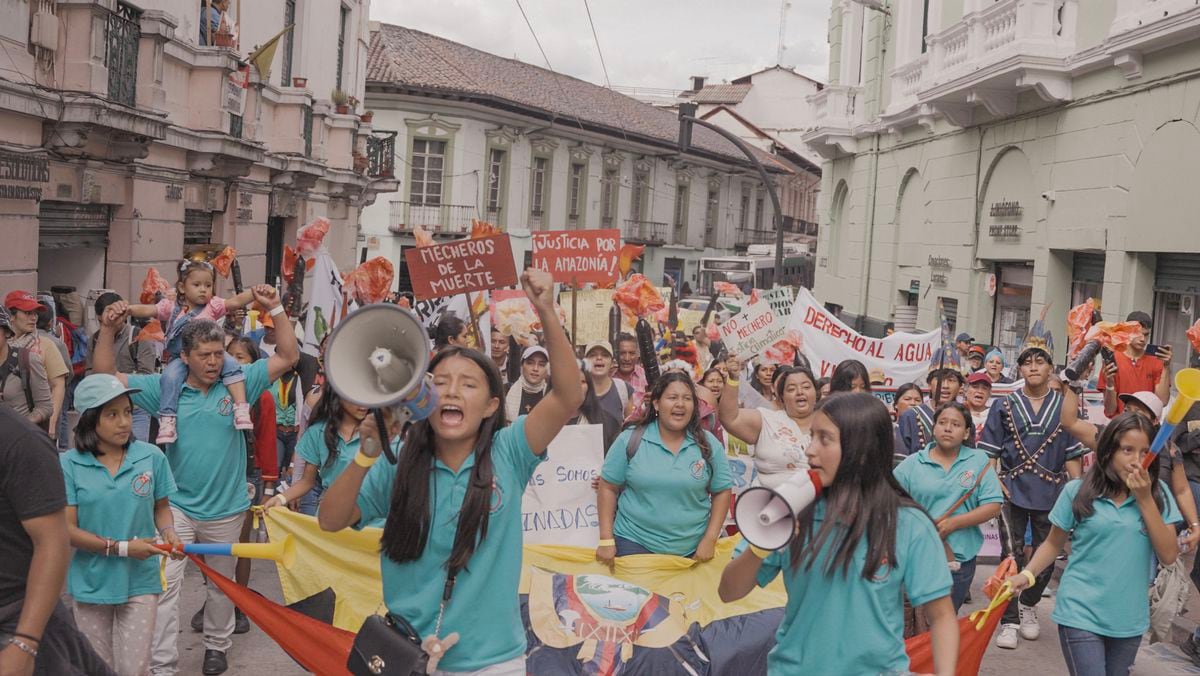Before colonization, today's Mexico was divided into Aridoamerica and Mesoamerica. In each region lived different peoples engaged in different activities. In the first, in the arid north, the pre-Hispanic peoples were hunters and gatherers. In the second, central and southern part of the country, the largest civilizations were established, which survived thanks to agriculture. The border that divided them has been a subject of study for decades. Until now, the idea, based on archaeological evidence, that this dividing line had moved southward because groups living in Mesoamerica had to migrate because of a drastic climate change that occurred about a millennium ago.
However, a new study of ancient DNA of these populations has led to the discovery of the same genetic traces, before and after several centuries of megadroughts, has opened the door to an option: that some Mesoamerican peoples had not moved, but had adapted to new ways of life in the absence of water. This resistance and ability to adapt draws attention to the serious political crisis that caused later in the Mayan civilization great droughts, which had also led to the collapse of empires such as the Hittite in Antiquity.
The genetic diversity of pre-Hispanic peoples shows extensive continuity for at least the last 2,300 years and still survives in the populations of Mexico today. The current indigenous groups of the country maintain similarities in their DNA with that of the ancient inhabitants. This genetic correspondence has been one of the conclusions of the study Demographic history and genetic structure in pre-Hispanic central Mexico, published today by the journal Science, and which helps to understand a little more about the demographic movements that ancient societies lived. A group of scientists has conducted the largest genetic study ever done on the ancient peoples of Mexico, which has shed some light not only on the present, but also the Mexican past.
More information
The 60-year megadrought that defeated an entire empire
The hypothesis that some peoples of Mesoamerica had been displaced because of climate change was formulated from anthropological studies. But the genetic review of 27 samples from different pre-Hispanic individuals, taken at eight archaeological sites, suggests something different. The punctual analysis of some remains of the Sierra Gorda, located in central Mexico and on the northern border of Mesoamerica, suggests that the population that inhabited that place did not migrate when the droughts occurred between 900 and 1,300 after Christ. "Sierra Gorda individuals before and after the drought shared greater genetic drift among themselves than with any other pre-Hispanic individual," the researchers say in their paper.
One of the co-authors of the study, María Ávila-Arcos, from the National Autonomous University of Mexico (UNAM), explains that although droughts could have affected other populations, it was not the case of the civilization that inhabited the Sierra Gorda, which remained in the place where it resided. "At the site we studied, population replacement did not occur. The continuity was captured," he says in a telephone interview. The publication notes that a possible explanation for this continuity "is that favorable climatic conditions in the northern Sierra Gorda have maintained higher humidity than other arid sites on the northern border of Mesoamerica."
Another factor that scientists believe could have helped the inhabitants of the Sierra Gorda survive, specifically those who lived in the current archaeological sites of Ranas and Toluquilla, is that many were dedicated to the trade of cinnabar or cinnabarite, a mineral that had a sacred value for pre-Hispanic cultures. "We hypothesize that the cinnabar trade and the landscape of the Sierra Gorda allowed the peoples of Toluquilla and Ranas to subsist despite the conditions of low rainfall," the document states. The researchers admit, however, that there are factors that suggest that they could have suffered a strong population reduction due to climate change.
A group of Akimel O'odham ('People of the River') ethnic group in the Sonoran Desert (now Arizona), in 1880.Graphic House (Getty Images)
The analysis carried out by UNAM scientists, together with researchers from academic institutions in Sweden, Denmark, the United States, Spain, Germany and Australia, explains how the migratory movements of ancient Mexican civilizations have been much more complex than expected. One of the points they point out, for example, is how DNA among Mesoamerican peoples were linked to each other; or gene flow between populations of Mesoamerica and Aridoamerica. Another of the correlations they draw is the line of continuity between the Pericúes, who inhabited the Baja California peninsula and disappeared in the eighteenth century, and the Pima people (also known as Akimel O'odham), who currently live between Arizona, Sonora and Chihuahua.
A collateral finding that the researchers, who have used databases of genomes that already existed, has been that of two ghost towns. Two societies that had not been mapped so far. One of those genetic contributions, which scientists have named UpopA and estimate was a community that separated from Native Americans about 24,700 years ago, has also been found in the genome of current populations in northern Mexico, as well as in the Mixe people, in the south of the country. The other phantom genes (UpopA2) were identified in the Rarámuri community of the Sierra Tarahumara. These lineages raise questions about how these exchanges took place. "There are more questions than answers, what does let us see is that this process of settlement of America was quite complex," concludes Ávila-Arcos.
You can follow MATERIA on Facebook, Twitter and Instagram, or sign up here to receive our weekly newsletter.


/cloudfront-eu-central-1.images.arcpublishing.com/prisa/A3CIAJJPYZJHVDEJJ5NWRRSTFM.jpg)

/cloudfront-eu-central-1.images.arcpublishing.com/prisa/AWQDFA55JRFZ7EFY4XGGS3VAVQ.jpeg)
/cloudfront-eu-central-1.images.arcpublishing.com/prisa/ZP4NWHUN7JACK2UZSAHGHFED3E.jpg)


/cloudfront-eu-central-1.images.arcpublishing.com/prisa/EMYXC3EVHNEG3OJHGIQCB2IVYA.jpg)
